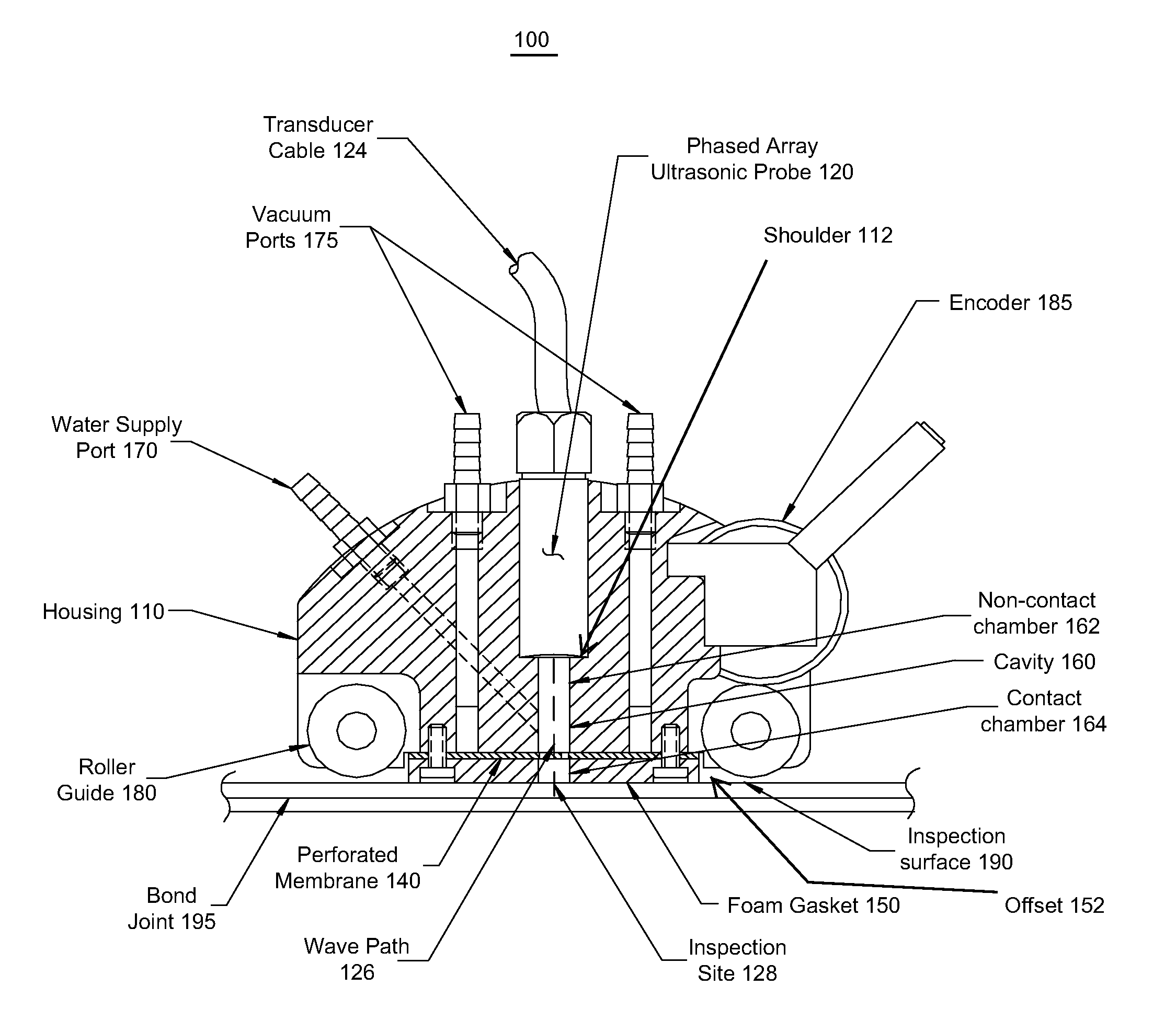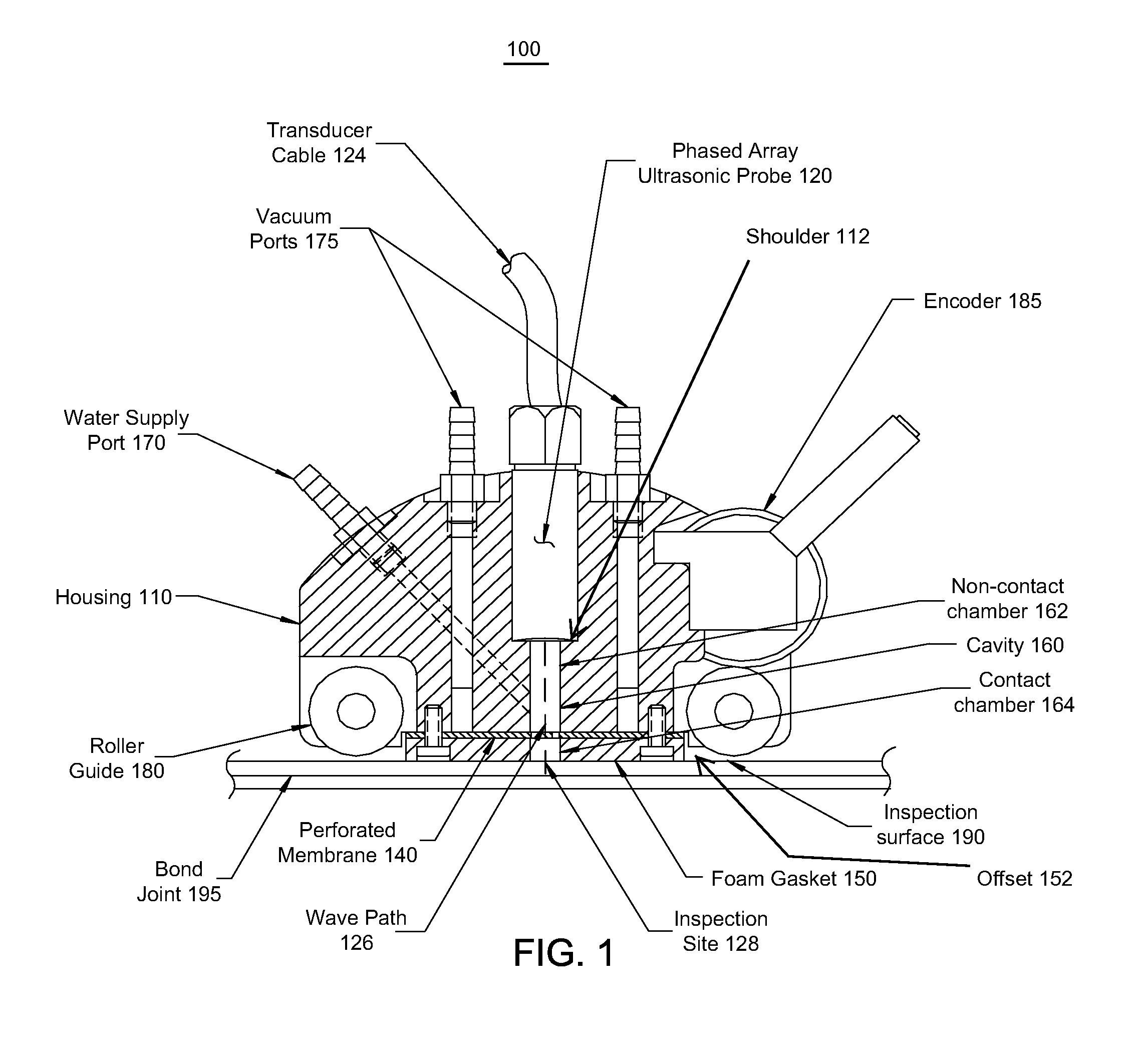Ultrasonic probe deployment device for increased wave transmission and rapid area scan inspections
- Summary
- Abstract
- Description
- Claims
- Application Information
AI Technical Summary
Benefits of technology
Problems solved by technology
Method used
Image
Examples
Embodiment Construction
[0031]FIGS. 1-3 are various views of an example ultrasonic probe deployment device 100 according to the invention. The device is used to inspect material, which in this example is a bonded joint 195. The surface of the inspection area shall be referred to as the inspection surface 190. FIG. 1 is a cross-section view. FIG. 2 contains front, top, bottom and side views. FIG. 3 contains bottom views of the foam gasket and perforated membrane.
[0032]An ultrasonic probe 120 rests in a machined recess within the main housing 110 of the probe deployment device 100. Cable 124 is the transducer cable. Two set screws 122 located on each side of the device ensure that the probe 120 remains fixed within the housing 110. The height of the probe 120 can be adjusted vertically depending on the desired focal length of the ultrasonic probe, or (as illustrated) can be adapted to abut a shoulder 112 within the machined recess to set the stand-off distance of the probe to match it's focal length. In this...
PUM
 Login to View More
Login to View More Abstract
Description
Claims
Application Information
 Login to View More
Login to View More - R&D
- Intellectual Property
- Life Sciences
- Materials
- Tech Scout
- Unparalleled Data Quality
- Higher Quality Content
- 60% Fewer Hallucinations
Browse by: Latest US Patents, China's latest patents, Technical Efficacy Thesaurus, Application Domain, Technology Topic, Popular Technical Reports.
© 2025 PatSnap. All rights reserved.Legal|Privacy policy|Modern Slavery Act Transparency Statement|Sitemap|About US| Contact US: help@patsnap.com



